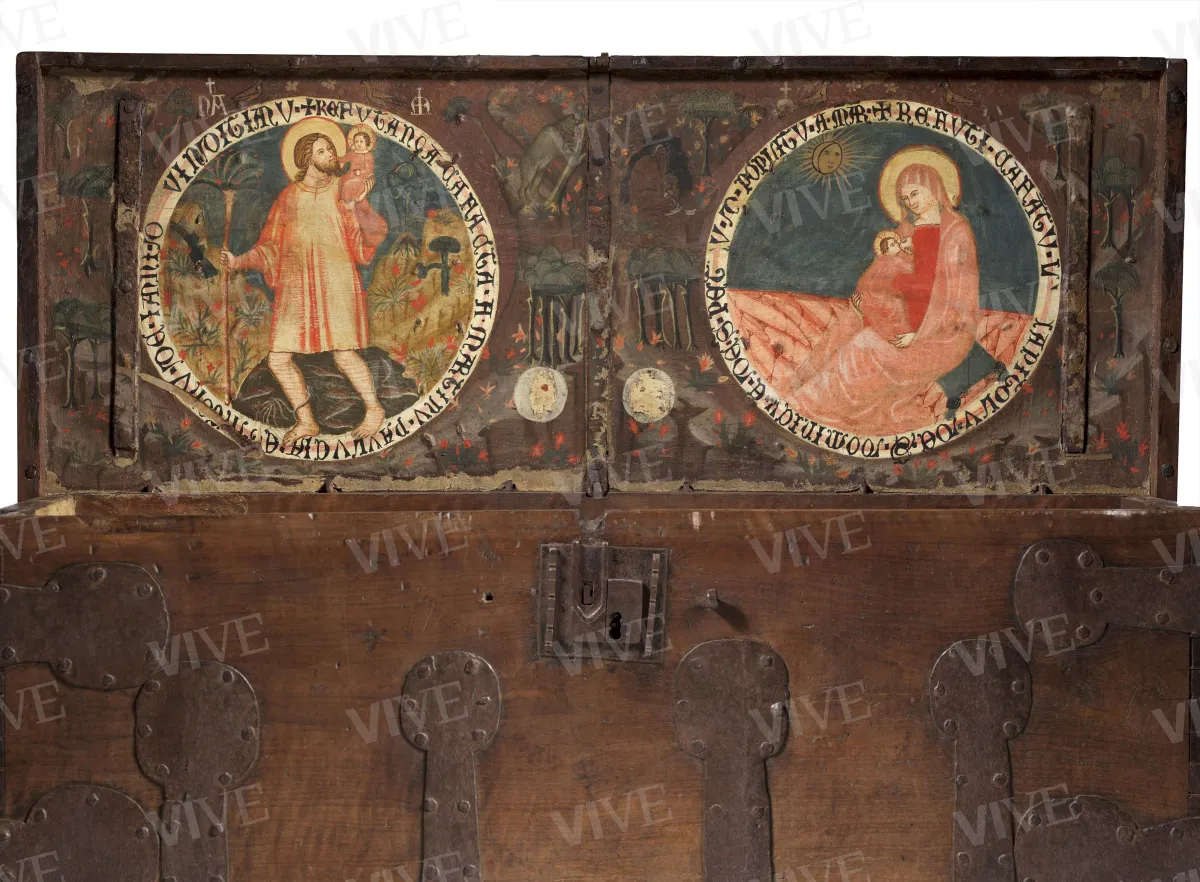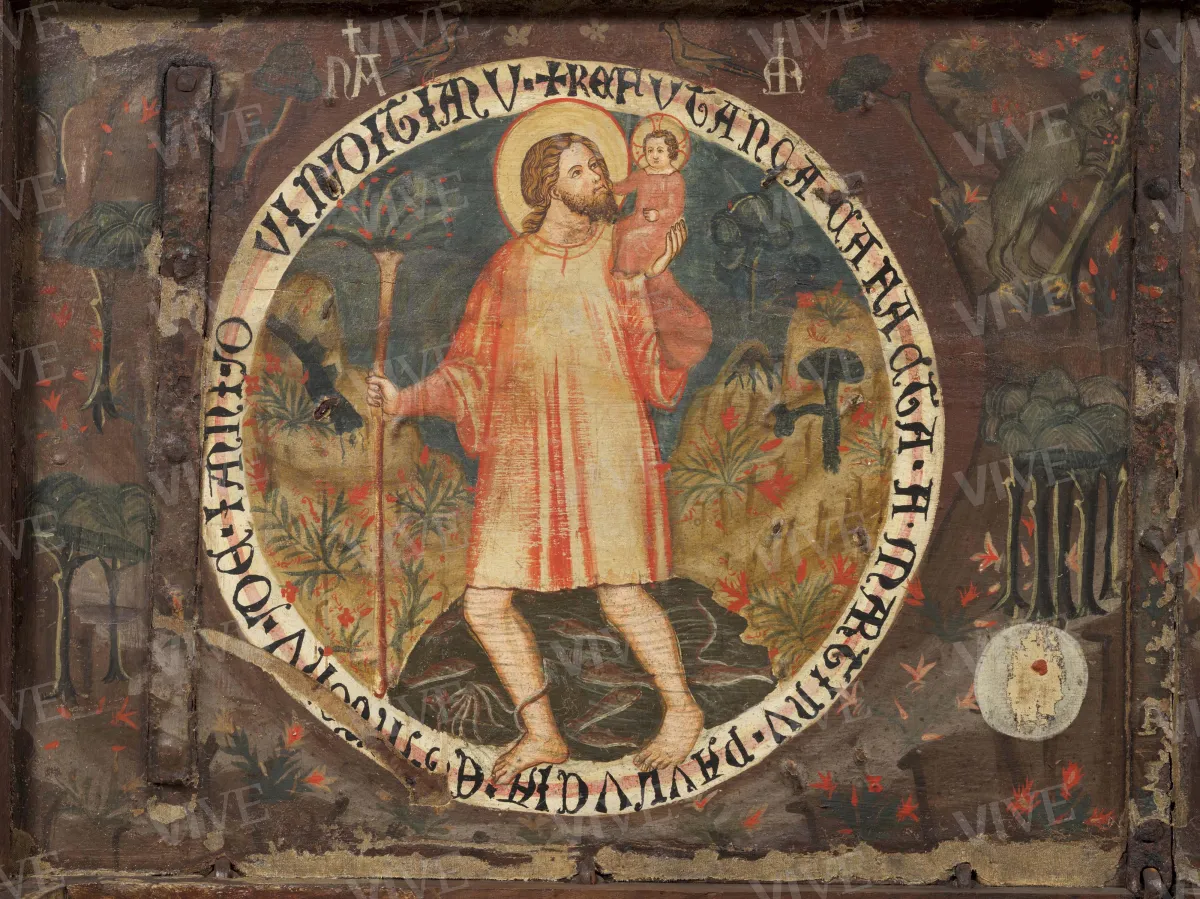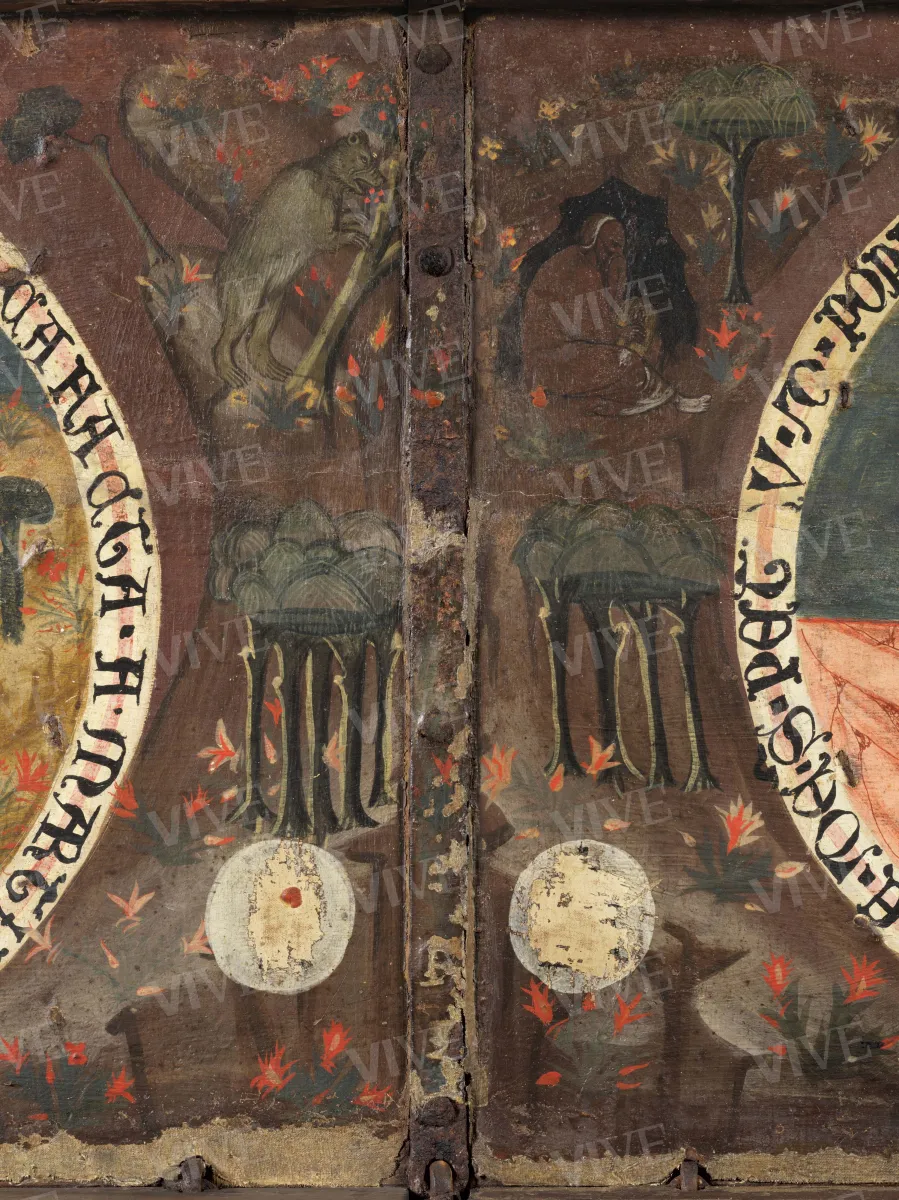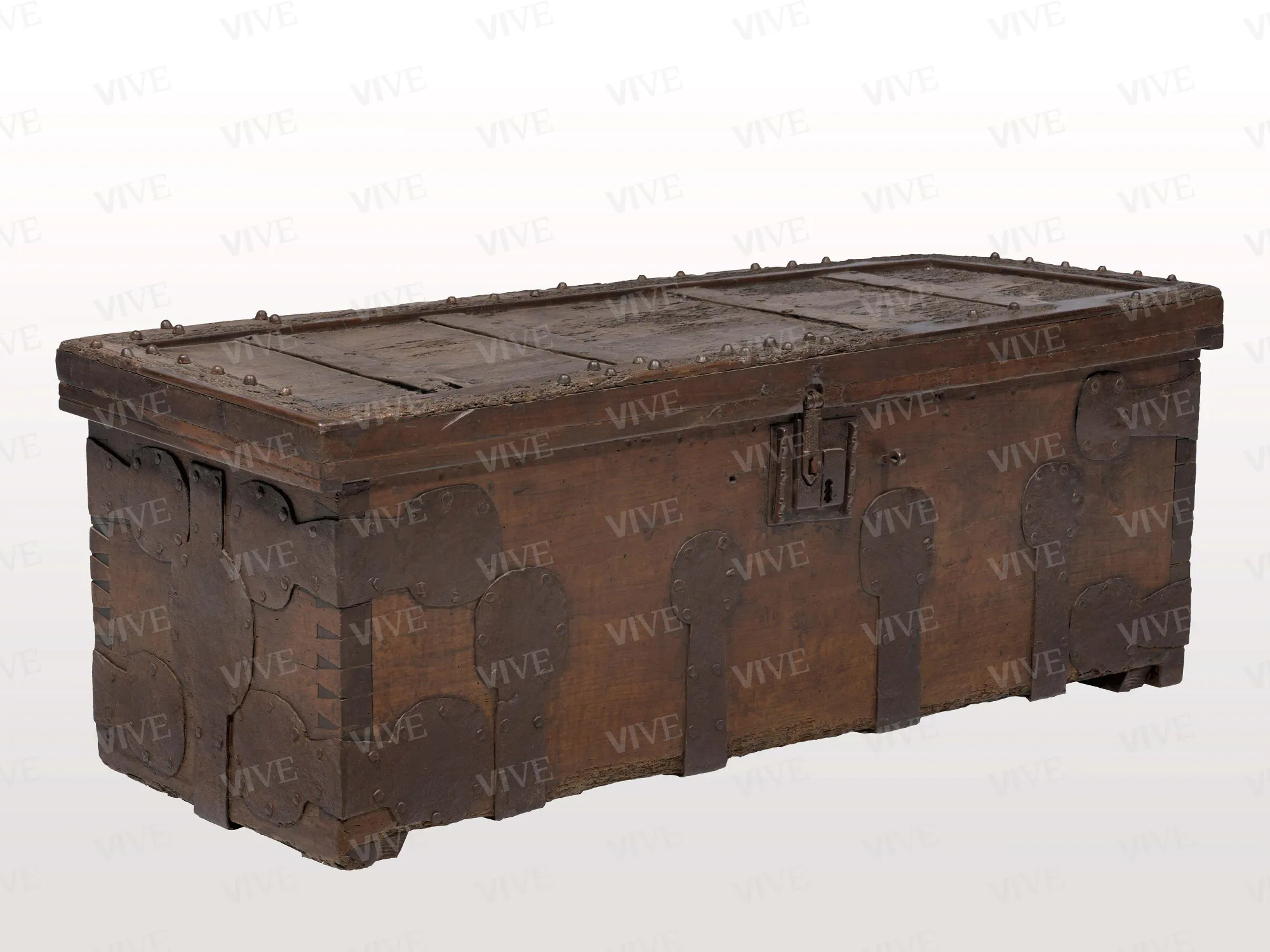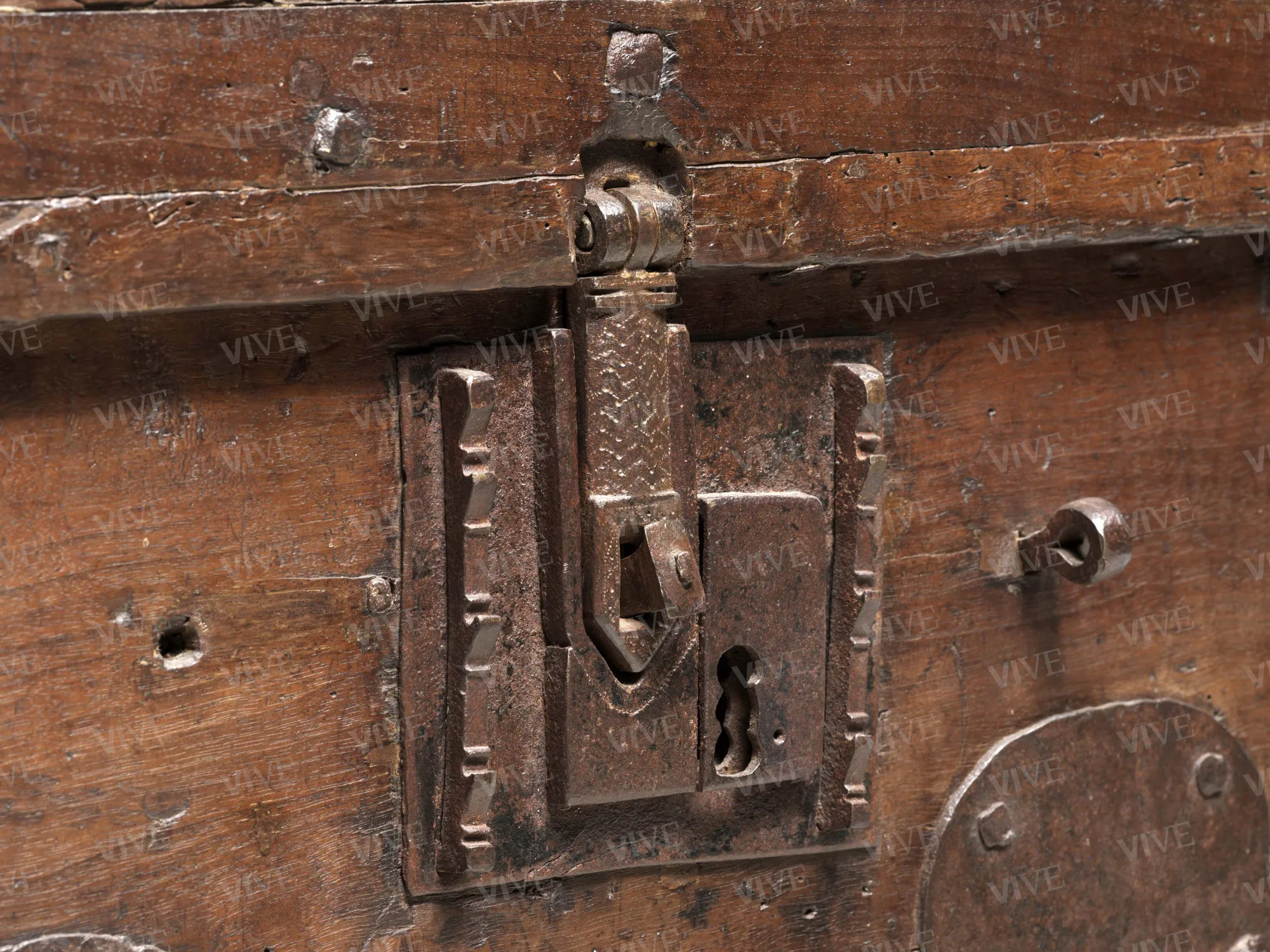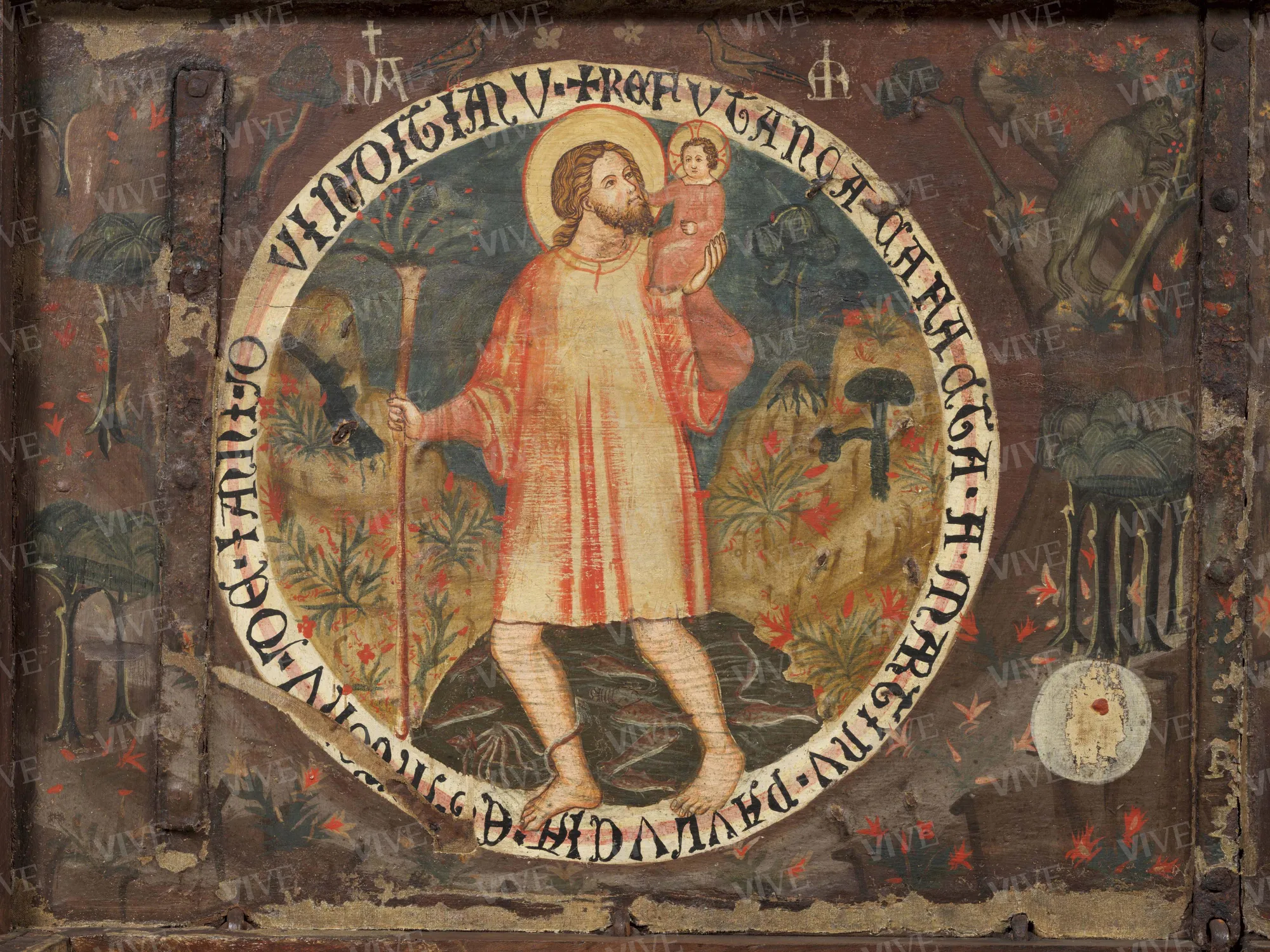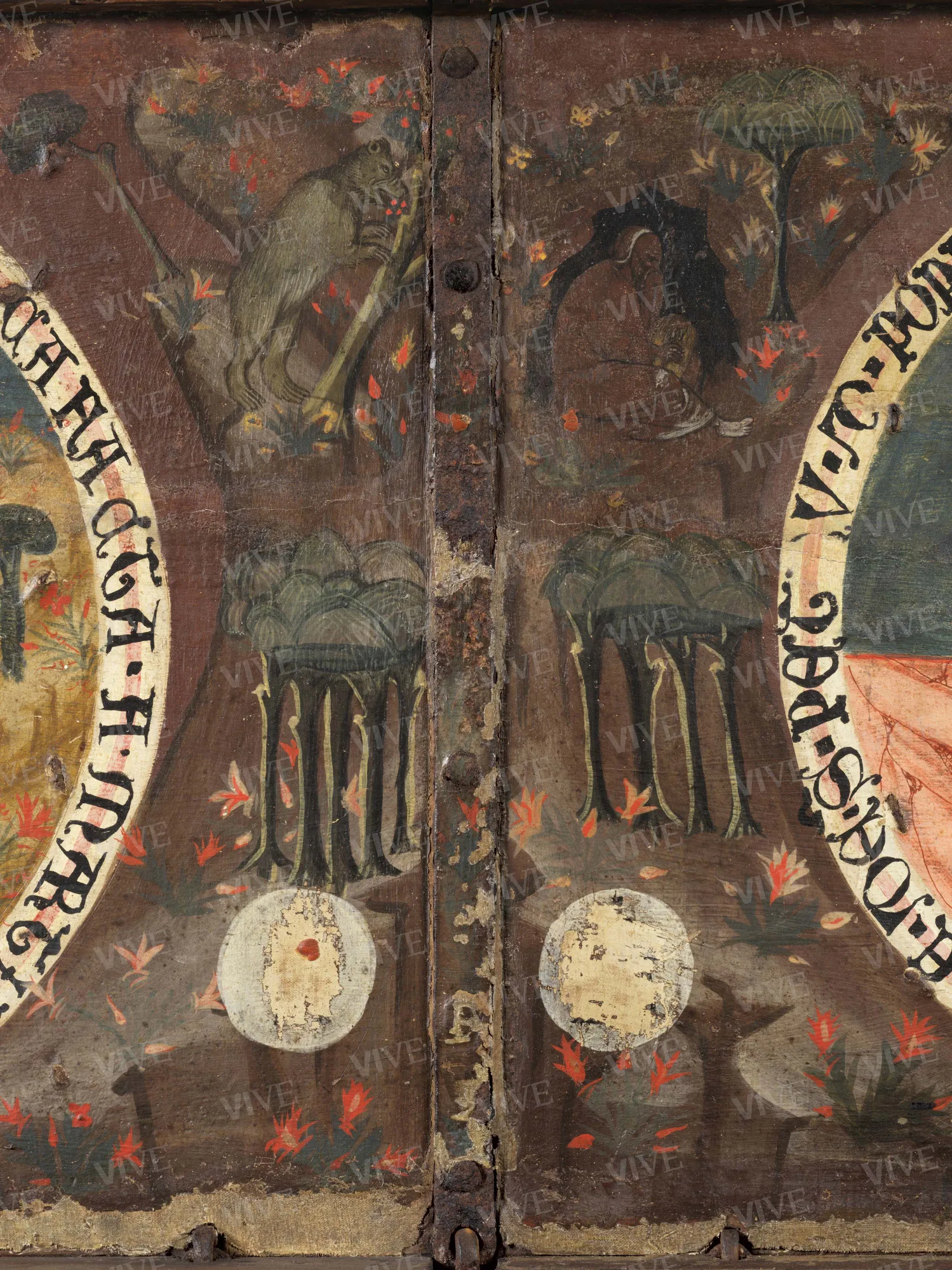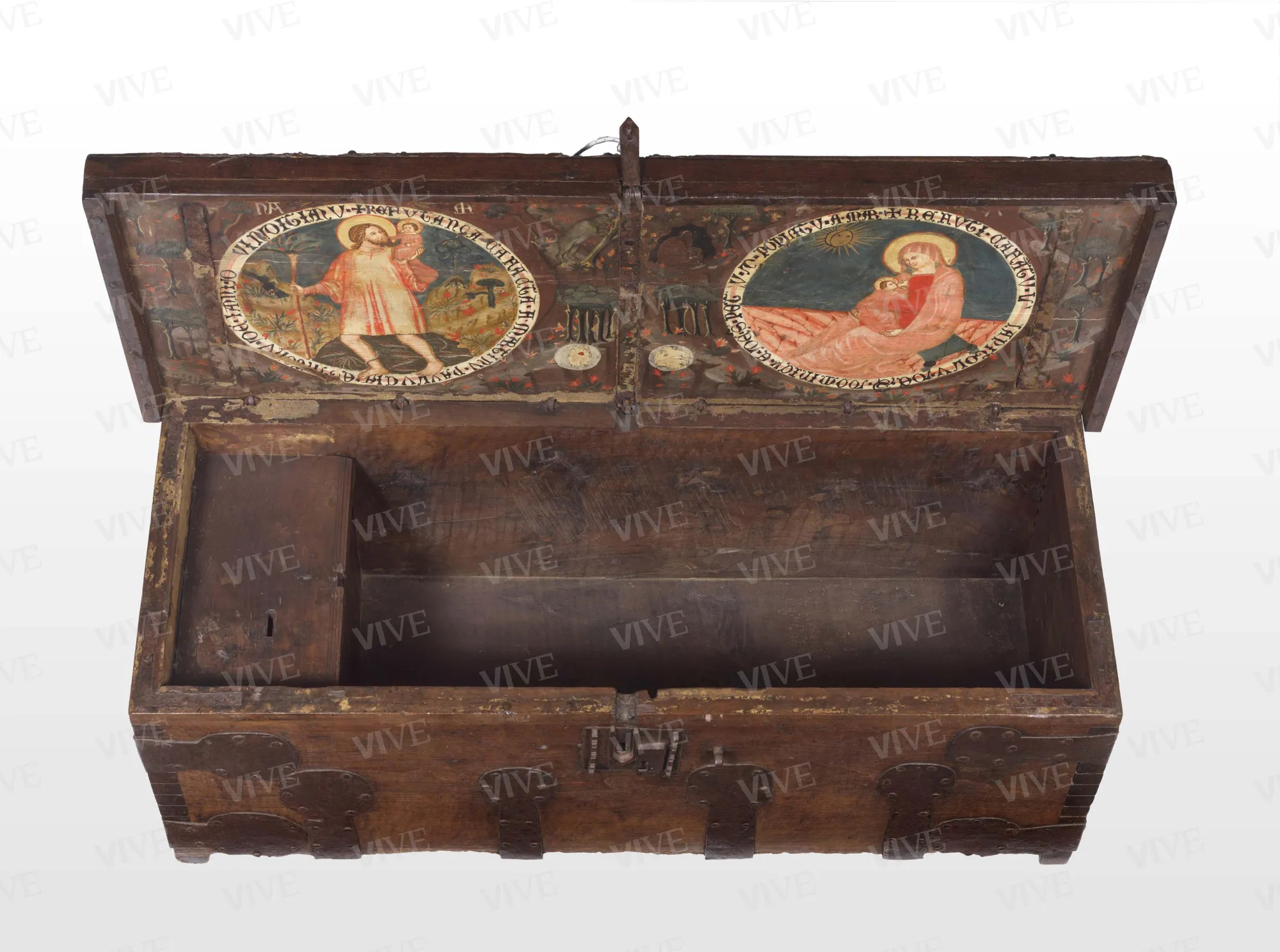Coffer cassone
Abruzzo milieu 1490-1499
The cassone, crafted in the fifteenth-century in Abruzzi, was probably used as a coffer, as can be inferred from its sturdy exterior and an internal coin box. Unusually, the inside of the flip-top lid is adorned with tempera paintings of two roundels: one featuring Saint Christopher and the other depicting a Madonna and Child. These are surrounded by inscriptions that possibly reference the occasion for which it was commissioned, and they evoke the chapter of the basilica of San Pietro in Coppito in L’Aquila.
The cassone, crafted in the fifteenth-century in Abruzzi, was probably used as a coffer, as can be inferred from its sturdy exterior and an internal coin box. Unusually, the inside of the flip-top lid is adorned with tempera paintings of two roundels: one featuring Saint Christopher and the other depicting a Madonna and Child. These are surrounded by inscriptions that possibly reference the occasion for which it was commissioned, and they evoke the chapter of the basilica of San Pietro in Coppito in L’Aquila.
Details of work
Catalog entry
The cassone has a plain exterior. On the walnut wood surface, beyond the sturdy post lock with a geometric zig-zag pattern, only the studded cross-pieces and the eight substantial wrought-iron reinforcing corner brackets with round, flat end plates are noticeable. The inner compartment, which is closed by a hinged lid, has a small lockable door safe on the left side covered with ochre fabric and equipped with a coin slot.
The interior of the lid features two remarkable tempera grassa paintings on canvas. Within tondi set against a naturalistic background populated by animals, such as birds and a bear eating berries, as well as figures including a hermit in a cave among flowers, trees, and Marian (?) monograms, are depictions of Saint Christopher on the left and the Madonna and Child on the right. Saint Christopher is shown carrying Jesus on his shoulders, immersed in water up to his mid-legs, crossing a river between two lush banks, leaning on a flowering staff. The Virgin, adorned in a red robe and pink mantle, is seated on a cushion above a marble surface, breastfeeding the Child, who is illuminated by an anthropomorphic sun. Surrounding the tondi is a white band bearing two inscriptions in Gothic capital letters that likely reference the commission and the occasion for which the cassone was created. Two smaller, worn white tondi in the lower spaces are now virtually unreadable.
The cassone was moved to its current location between 1919 and 1921, originating from Castel Sant’Angelo, where it was documented in 1907 among the selected pieces for the nascent Museo della città di Roma dal Medioevo all’Età moderna. This cassone is mentioned in 1916 in an unpublished report by inspector Giorgio Bernardini on the collections of Castel Sant'Angelo and their layout (Nicita 2009, p. 302) and recorded early in 1921 in the new layout of Palazzo Venezia, in the small passageway of the Torre Armi (Anonymous 1921, p. 286). By 1921, the cassone had transitioned from a generic attribution to the southern Italian area as presented in the Bernardini report, to being associated with the fifteenth-century Abruzzi area, supported by some later critics (Hermanin 1948, pp. 361-362; Massafra 1983). Other scholars have identified the piece as originating from the Tuscan area (Steiner, Del Puglia 1963, fig. 16; Ghelardini 1970, fig. 11; Brosio 1971, p. 60, fig. 2). In the OA report of the work compiled by Fernanda Iacoangeli (Rome, Archivio storico del Museo di Palazzo Venezia), the chest is generally attributed to a central Italian craftsman of the fifteenth century.
Given the anonymous nature of the exterior, the only clue to the cassone’s origin are the painted roundels on the inside of the lid and accompanying inscriptions. These inscriptions, which have been interpreted as a reference to a wedding (Hermanin 1948, pp. 361-362), are written in vernacular Italian: they presumably mention certain individuals (in the left-hand tondo) and chapters of ecclesiastical bodies named after Saints Dominic and Peter (in the right-hand tondo) and should probably be read as a continuation of the latter. One of the places mentioned—“S. Petru d[e] Poplitu”—likely refers to the basilica of San Pietro in Coppito, a district of L’Aquila whose ancient toponym was “Poppleto” (here given in its phonetic variant in “Popplito”; personal thanks go to Matteo Mazzone for his assistance). The complex of San Domenico was once close to the basilica, which would explain why both names are present in the inscription accompanying the painted tondo. As for the occasion of the commission, the term “refutanza,” which would indicate separation rather than a wedding, should be linked to an economic context, in this case meaning “quietanza,” or payment of moneys owed, by the chapter to private individuals, such as Martino and Antonio.
Lorenzo Mascheretti
Entry published on 27 March 2025
State of conservation
Fair.
Restorations and analyses
In May 2005, gas disinfestation was conducted at the Museo Nazionale degli strumenti musicali in Rome.
Inscriptions
Inside, on the flip-top lid: monograms.
Inside, on the flip-top lid, in the frames around the roundels painted in tempera: “+ refutança – cafacta – a martinv – pavlvcia – et – antonv – de – ianni – d – vinditianv –“; “+ refvti – cafatv – l – capitolv – de – s – dominicv – e – de – s – petrv – d – poplitv – a – mar -.”
Provenance
Rome, Castel Sant’Angelo, 1907;
Rome, Museo Nazionale di Palazzo Venezia, purchased 1919–1921.
References
Anonimo, Nell’appartamento di Paolo II, in «L’artista moderno. Giornale d’arte applicata», 1921, pp. 286-287;
Hermanin Federico, Il Palazzo di Venezia, Roma 1948, pp. 361-362;
Steiner Carlo, Del Puglia Raffaella, Mobili ed ambienti italiani dal gotico al floreale, I, Milano 1963, fig. 11;
Ghelardini Armando, Il mobile italiano dal Medioevo all'Ottocento, Milano 1970, fig. 11;
Brosio Valentino, Il mobile italiano, Roma 1971, p. 60, fig. 2;
Massafra Maria Grazia, Riguardo ad alcuni cassoni conservati nel Museo di Palazzo Venezia in Roma, in Tampone Gennaro (a cura di), Legno nel restauro e restauro del legno, Atti del congresso nazionale (Firenze, 30 novembre-3 dicembre 1983), Milano 1983, pp. 292-293, fig. 9;
Nicita Paola, Musei e storia dell'arte a Roma. Palazzo Corsini, Palazzo Venezia, Castel Sant’Angelo e Palazzo Barberini tra XIX e XX secolo, Roma 2009, p. 302.



